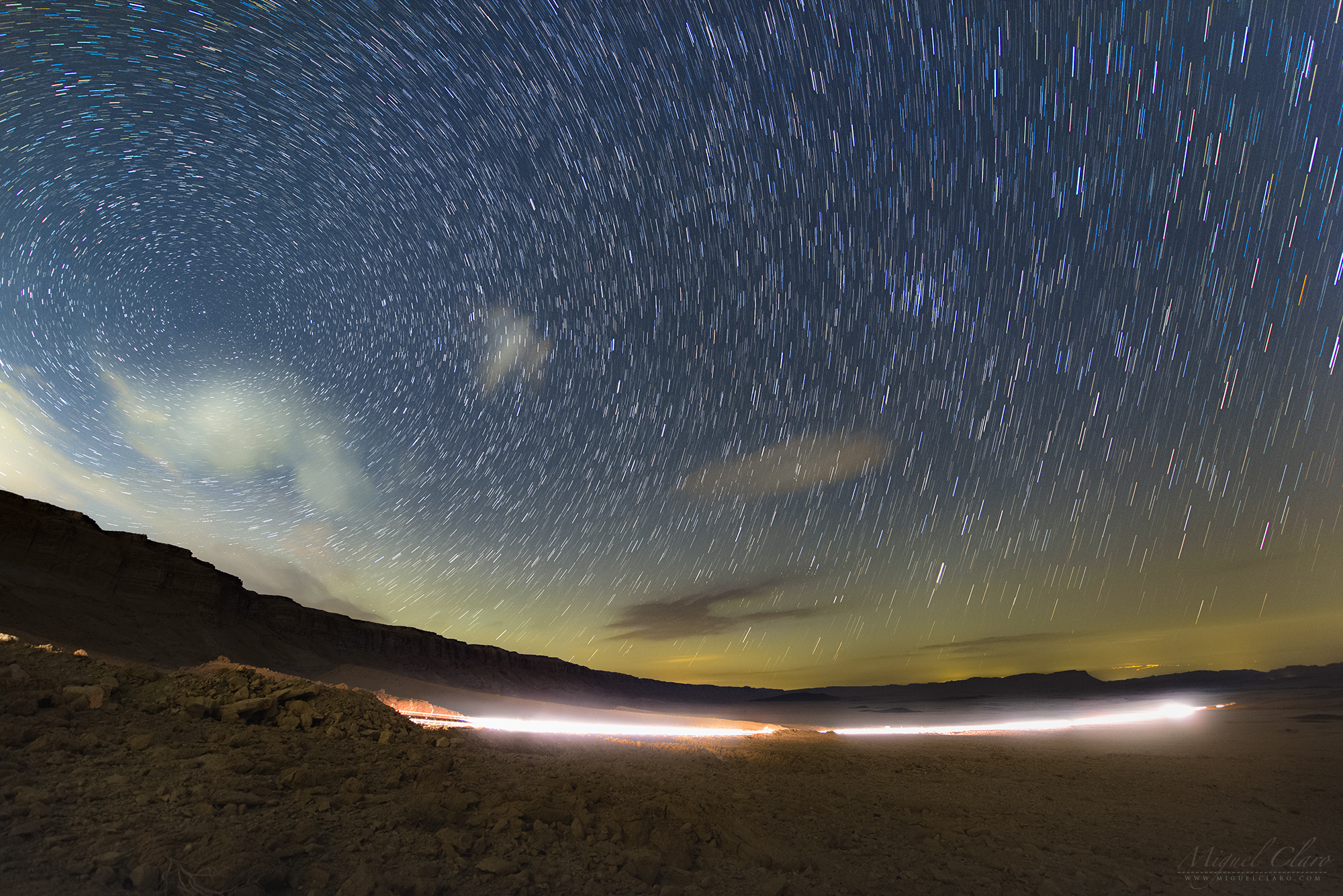Star Trails Swirl Over Israel's Negev Desert (Photo)

Miguel Claro is a professional photographer, author and science communicator based in Lisbon, Portugal, who creates spectacular images of the night sky. As a European Southern Observatory photo ambassador, a member of The World At Night and the official astrophotographer of the Dark Sky Alqueva Reserve, he specializes in astronomical "skyscapes" that connect Earth and the night sky. Join him here as he takes us through his photograph "Light Trails in Israel Desert."
Star trails circle over Ramon Crater in this long-exposure photo of the night sky over Israel's Negev Desert.
I captured this photo from inside Ramon Crater (also known as Makhtesh Ramon), the world's largest erosion cirque. The Ramon Crater geological formation has nothing to do with a meteor strike, despite its name. Rather, this "crater" formed about 220 million years ago when the ocean that once covered the area dried up. The eroding ocean floor then gave way to the crater-like valley we see there today.
The image features a night sky filled with colorful star trails. Each star's color is directly related to its type and temperature and can appear blue, white, yellow or even orange. The hottest stars are blue, and the coolest stars are red. A long-exposure photo like this can reveal the stars' apparent motion across the sky.
Related: How to Tell Star Types Apart (Infographic)
Though stars do move through space, their dramatic apparent motion from our perspective on Earth is the result of our planet's rotation. Our planet is rotating very slowly compared to the speed of light; near the equator, the surface of the Earth moves at speeds of up to 1,000 mph (460 meters per second), according to Scientific American. During the daytime, our perception of Earth's rotation is defined by sunrises and sunsets, but at night we can witness that motion continuously as the stars traverse the sky.
To capture this star-trail image, I made a sequence of shots using a Nikon D810a camera set to capture a 25-second exposure for each of the frames, with the ISO set to 2500, and a 14-millimeter (0.55 inches) lens, set to f/2.8.
Get the Space.com Newsletter
Breaking space news, the latest updates on rocket launches, skywatching events and more!
Editor's note: If you have an amazing night-sky photo you'd like to share with us and our news partners for a possible story or image gallery, please contact editor-in-chief Tariq Malik at spacephotos@space.com.
- The Brightest Visible Planets in July's Night Sky: How to See them (and When)
- Night Sky, July 2019: What You Can See This Month [Maps]
- When, Where and How to See the Planets in the 2019 Night Sky
To see more of Claro's amazing astrophotography, visit his website: www.miguelclaro.com. Follow us on Twitter @Spacedotcom and on Facebook.
Join our Space Forums to keep talking space on the latest missions, night sky and more! And if you have a news tip, correction or comment, let us know at: community@space.com.









